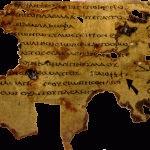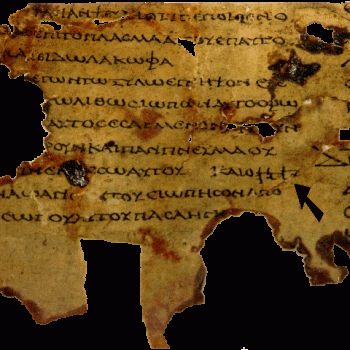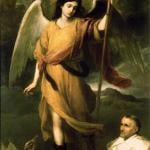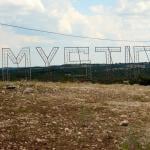Including Related Discussion on Confused, Baffled Protestant Exegesis of Matthew 2:23: “He shall be called a Nazarene”
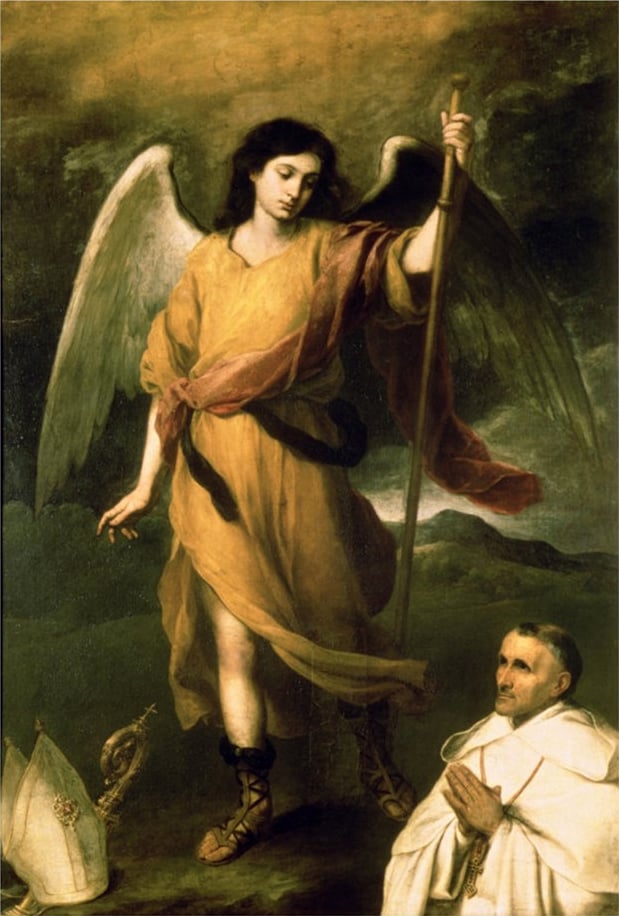
Norman L. Geisler (1932 – 2019) was an American Protestant theologian, philosopher, and apologist. He obtained an M.A. in theology from Wheaton College and a Ph.D. in philosophy from Loyola University, and made scholarly contributions to the subjects of classical Christian apologetics, systematic theology, philosophy of religion, Calvinism, Catholicism, biblical inerrancy, Bible difficulties, biblical miracles, the resurrection of Jesus, ethics, and other topics. He wrote or edited more 90 books and hundreds of articles.
Dr. Geisler was the Chairman of Philosophy of Religion at Trinity Evangelical Divinity School (1970–79) and Professor of Systematic Theology at Dallas Theological Seminary (1979–88) and a key figure in founding the Evangelical Philosophical Society. He also co-founded Southern Evangelical Seminary. He was known as an evangelical Thomist and considered himself a “moderate Calvinist”. He was not an anti-Catholic (i.e., he didn’t deny that Catholicism was fully a species of Christianity).
This is a series of comprehensive replies to his book, Roman Catholics and Evangelicals: Agreements and Differences (co-author, Ralph E. MacKenzie, graduate of Bethel Theological Seminary-West; Grand Rapids, Michigan: Baker Academic, 1995). It’s available online in a public domain version, which has no page numbers, so I will utilize page numbers from my paperback copy, for the sake of full reference. I’ll be concentrating on the eight sections of Part Two: “Areas of Doctrinal Differences” (202 pages). These installments will be listed and linked on my Calvinism & General Protestantism web page, in section XVII: “Catholics and Protestants” (second from the end).
Catholic apologist Jimmy Akin, according to the authors, offered “an invaluable effort of evaluation and critique of Parts One and Two” (p. 9). Akin in a blurb on the back cover, states that the book “offers a comprehensive and balanced discussion and should retire older, sensationalistic works.” I agree! I consider it the best Protestant critique of Catholicism (especially in terms of biblical arguments) that I have ever found, from any time period. The arguments are impressively presented, thought-provoking, respectful and respectable; worthy of serious attention.
His words will be in blue. My biblical citations are from RSV.
*****
1. There may be New Testament allusions to the Apocrypha, but there are no clear New Testament quotations from it. Not once is there a direct quotation from any apocryphal books accepted by the Roman Catholic Church. Further, although the New Testament cites the Hebrew Old Testament, it never once quotes any of the fourteen (or fifteen) apocryphal books as divinely authoritative or canonical. For example, they are never cited with introductory phrases like “thus says the Lord” or “as it is written” or “the Scriptures say,” such as are typically found when canonical books are quoted. (pp. 160-161)
It’s true that the formula is not used, but some citations are so close, with the citation itself being inspired as part of the inspired New Testament, that in places it becomes a “distinction without a difference.” Let’s look at two examples of perhaps the most striking similarities, in effect becoming “citations”:
2 Maccabees 12:44 For if he were not expecting that those who had fallen would rise again, it would have been superfluous and foolish to pray for the dead.
1 Corinthians 15:29 Otherwise, what do people mean by being baptized on behalf of the dead? If the dead are not raised at all, why are people baptized on their behalf?
See my article, Baptized for the Dead: The “UnProtestant” Verse (1 Cor 15:29) [2004]
***
Tobit 12:15 I am Raphael, one of the seven holy angels who present the prayers of the saints and enter into the presence of the glory of the Holy One.
Revelation 1:4 Grace to you . . . from the seven spirits who are before his throne. (cf. “seven spirits of God”: 3:1; 4:5; 5:6; “seven angels” appears nine times in Revelation: 8:2, 6; 15:1, 6-8; 16:1; 17:1; 21:9)
Revelation 8:3-4 And another angel came and stood at the altar with a golden censer; and he was given much incense to mingle with the prayers of all the saints upon the golden altar before the throne; and the smoke of the incense rose with the prayers of the saints from the hand of the angel before God.
The belief in “seven spirits” (seemingly, archangels) has to come from some sort of Jewish tradition. The phrases, “seven spirits” and “seven angels” and “seven holy angels” never appear in the 66-book Protestant Old Testament in RSV. All we have is Tobit 12:15. Thus, a good case can be made that Revelation 1:4 and the other twelve references to seven “angels” or “spirits” in Revelation are indeed directly drawing from Tobit 1:15. We know, generally speaking, that New Testament angelology and eschatology significantly developed from the notions discussed in Judaism in the few hundred years before Christ.
The angel Raphael doesn’t appear in the Protestant Old Testament, but does in Tobit (nine times) and also in the non-canonical book 1 Enoch, 14 times. Six of the appearances in 1 Enoch are in conjunction with other archangels, Michael, Gabriel, and Uriel (Bk. I, ch. 4:1; ), or Michael, Gabriel, and Phanuel (Bk. II, ch. 1:33; ch. 2:60; Bk. IV, ch. 1:14-15, 19). “Michael” appears 18 times, “Uriel” 16 times, “Gabriel” eight times, and “Phanuel” five times.
Then there is a tie-in of some of these archangels in the canonical books accepted by all: Michael the Archangel (Dan 10:13, 21; 12:1; Jude 1:9; Rev 12:7) and the Archangel Gabriel (Dan 8:16; 9:21; Lk 1:19, 26). There is clearly a lot of interchange in the thought between the 66-book canon, the deuterocanon, and even additional apocalyptic books such as 1 Enoch (Geisler notes on p. 160 that it was alluded to in Jude 14-15). It’s not nearly as simple as Geisler makes out above, even though the allusions or citations don’t include “Thus says the Lord” etc.
Even accepted NT citations of the OT are often an exegetically and linguistically complex matter. See, for example, the article, “New Testament Use of the Old Testament,” by Roger Nicole, from Revelation and the Bible, edited by Carl. F. H. Henry (Grand Rapids, Michigan: Baker, 1958), pp. 137-151. It explains the nature of paraphrased citations and then provides many scriptural examples: the consideration of which leads one to adopt the general principle in the first place. Nicole wrote:
In certain cases the New Testament writers do not refer to a single passage, but rather summarize the general teaching of the canonical books on certain subjects in phrasing appropriate to the New Testament, although as to the essential thought they express indebtedness to, or agreement with, the Old Testament. This method of referring to the Old Testament teachings is obviously legitimate. The following passages might be viewed as examples of “quotations of substance,” as Franklin Johnson calls them in his able treatise on The Quotations of the New Testament from the Old Considered in the Light of General Literature (London, Baptist Tract and Book Society, 1896): Matthew 2:23; 5:31, 33; 12:3, 5; 19:7; 22:24; 24:15; 26:24, 54, 56; Mark 2:25; 9:12, 13;10:4; 12:19; 14:21, 49; Luke 2:22; 6:3; 11:49; 18:31; 20:28; 21:22; 24:27, 32, 44-46; John 1:45; 5:39, 46; 7:38, 42; 8:17; 17:12; 19:7, 28; 20:9; Acts 1:16; 3:18; 7:51; 13:22, 29; 17:2, 3; Romans 3:10; 1 Corinthians 2:9; 14:34; 15:3, 4, 25-27; 2 Corinthians 4:6; Galatians 3:22; 4:22; Ephesians 5:14; James 4:5; 2 Peter 3:12, 13.
Ronald F. Youngblood, in his chapter, “Old Testament Quotations in the New Testament,” from The NIV: The Making of a Contemporary Translation (edited by Kenneth L. Barker; Acadamie Books, 1986, chapter ten) concurs:
3 What is meant by “quotations”? Roger Nicole reminds us that the New Testament writers did not have the same rules for quoting that we take for granted today. They neither had nor used quotation marks, ellipsis marks, brackets, or footnote references. They were therefore unable to indicate readily where quotations began and ended, whether omissions occurred in their citations, whether editorial comments were being inserted or intercalated, whether more than one Old Testament passage was being quoted, etc.
*
In addition “quotations” should be understood to include allusions and paraphrases, since the NT writers often quoted from memory and therefore with greater or lesser degrees of freedom. The minds of the New Testament authors were so saturated with Old Testament texts and teachings that they referred to the Old Testament in a variety of ways—now quoting precisely, now alluding to this or that passage, now paraphrasing—but never deviating from its life-transforming message. . . .
In a very few cases, no suitable Old Testament passage can be found as the source for what clearly seems to be direct citations of Scripture in the New Testament. In such instances it would seem that the New Testament writer was freely summarizing Old Testament teaching and did not intend to quote—either verbatim ac litteratim or ad sensum—a specific Old Testament verse. . . .
When New Testament writers cited the Old Testament, they were often alluding not only to the specific passage quoted but also to its context, whether near or remote. An excellent example is Hebrews 12:21: “The sight was so terrifying that Moses said, ‘I am trembling with fear.’ ” The NIV correctly footnotes Deuteronomy 9:19 as the closest Old Testament parallel, but the previous footnote recognizes Exodus 19 as the overall contextual setting. It was to be expected that most first-century readers and hearers, steeped in the Old Testament Scriptures, would see in their mind’s eye the entire context of any Old Testament verse or two brought to their attention. . . .
5. How do New Testament writers quote from the Old Testament? Wenham maintains:
We have … no right to demand of believers in verbal inspiration that they always quote Scripture verbatim, particularly when the Scriptures are not written in the native language of either writer or reader. As with the word preached, we have a right to expect that quotations should be sufficiently accurate not to misrepresent the passage quoted; but, unless the speaker makes it clear that his quotation is meant to be verbatim, we have no right to demand that it should be so. In the nature of the case, the modern scholarly practice of meticulously accurate citation, with the verification of all references, was out of the question. . . .
Various combinations of passages cited from two or more Old Testament books are not uncommon in the New Testament. A fine example is Romans 3:10-18, which, according to the NIV footnotes there, quotes from the Psalms, Isaiah, and (perhaps) Ecclesiastes. A noteworthy variation of this phenomenon is the so-called h+a98araz (“chain,” “necklace”; the same Hebrew root is used in Song of Songs 1:10, where it is translated “strings of jewels”), which intersperses a series of quotations with conjunctions, introductory formulas, and the like (see, e.g., Rom. 9:25-29 and NIV footnotes there).
If we’re talking about Nicole’s “quotations of substance,” there are a host of NT citations of the deuterocanon, that I compiled from the Nestle-Aland Greek New Testament, 27th edition (Novum Testamentum: Graece et Latine, published by Deutsche Bibelgesellschaft) almost twenty years ago:
*
So, for example, the great Baptist New Testament linguist A. T. Robertson, commenting on the interpretation of Matthew 2:23, admits: “It is best to confess that we do not know.”
We may, with many of the ancient Christians, particularly Chrysostom, suppose, that the evangelist may refer to some writings of the prophets, which were then extant, but are now lost, or to some writings not put into the Sacred Canon, or to some paraphrases upon the writings. As to the interpretations which refer this to Christ’s being called Netzer, the Branch, Isaiah 11:1; Jeremiah 23:5; or Nazir, one Separated, or, the Holy One, they all fail . . .
Whence St Matthew obtained it, who knows? . . . Rightly, many have long since denied that this verse exists in the Scriptures of the Old Testament. Its condition, therefore, is the same as that of the prophecy of Enoch, introduced at length by St Jude into the Scriptures of the New Testament, and thus stamped with the seal of inspiration; the same as that of the apothegm, which, though delivered by our Lord, does not occur in the Gospels, but is quoted by the mouth of St Paul, and the pen of St Luke, Acts 20:35. . . . Where lay hid the Proverbs of Solomon from ch. Matthew 25:1; the prophecy of Azariah (2 Chronicles 15:2, etc.); the epistle of Elijah (2 Chronicles 21:12), until they were inserted in the books of the Old Testament, many ages after they were delivered? Certainly, there was no sufficient reason why St Matthew should frame[109] this, if it had been a perfect novelty in his own time. By such a proceeding, he would have more injured than advantaged the whole Christian cause. He had sufficiently numerous examples of prophecies fulfilled in Jesus of Nazareth without this. Those who interpret this important verse more vaguely, so as to make out that it is contained here or there in the Scriptures of the Old Testament, in truth take away one from the ancient prophecies; whereas those who consider ΤῸ ΡΗΘῈΝ (that which was uttered), “He shall he called a Nazarene,” to have been expressly uttered of old, recognise a homogeneous portion of the entire testimony of prophecy, and thus in truth maintain the integrity and defend the simplicity of Scripture . . .
We know that there were many prophets in ancient Israel who genuinely spoke for God, even though their prophecies are not recorded in the Old Testament. . . .
Could it be that some of this material was passed down in the form of oral tradition, and this is what Matthew was referring to?
He notes that 1 Kings 18:3-4 referred to “a hundred prophets.” 1 Samuel 19:20 refers to “the company of the prophets.” These prophets could have possibly passed down oral tradition, which has been lost, or they could have written other biblical books that were subsequently lost. This is not some far-fetched or desperate notion, since, as Jimmy notes, “the Old Testament refers to them.” He provides four passages (I use RSV here):
1 Chronicles 29:29 Now the acts of King David, from first to last, are written in the Chronicles of Samuel the seer, and in the Chronicles of Nathan the prophet, and in the Chronicles of Gad the seer,
2 Chronicles 9:29 Now the rest of the acts of Solomon, from first to last, are they not written in the history of Nathan the prophet, and in the prophecy of Ahi’jah the Shi’lonite, and in the visions of Iddo the seer concerning Jerobo’am the son of Nebat?
2 Chronicles 12:15 Now the acts of Rehobo’am, from first to last, are they not written in the chronicles of Shemai’ah the prophet and of Iddo the seer? There were continual wars between Rehobo’am and Jerobo’am.
2 Chronicles 13:22 The rest of the acts of Abi’jah, his ways and his sayings, are written in the story of the prophet Iddo.
Wikipedia presents many more similar fascinating examples in its article, “Non-canonical books referenced in the Bible.” The great evangelical biblical scholar F. F. Bruce commented upon the New Testament use of what might be called “anomalous” older Jewish writings:
So thoroughly, indeed, did Christians appropriate the Septuagint as their version of the scriptures that the Jews became increasingly disenchanted with it . . . We cannot say with absolute certainty, for example, if Paul treated Esther or the Song of Solomon as scripture any more than we can say if those books belonged to the Bible which Jesus knew and used . . . the book of Wisdom was possibly in Paul’s mind as he dictated part of the first two chapters of Romans . . . [footnote 21: The exposure of pagan immorality in Rom. 1:18-32 echoes Wisdom 12-14; the attitude of righteous Jews criticized by Paul in Rom. 2:1-11 has affinities with passages in Wisdom 11-15]. The writer to the Hebrews probably had the martyrologies of 2 Maccabees 6:18-7:41 or 4 Maccabees 5:3-18:24 in view when he spoke of the tortures and other hardships which some endured through faith (Heb. 11:35b-38, and when he says in the same context that some were sawn in two he may allude to a document which described how the prophet Isaiah was so treated [footnote 23: Perhaps the Ascension of Isaiah . . . ] . . .The Nestle-Aland edition of the Greek New Testament (1979) has an index of Old Testament texts cited or alluded to in the New Testament, followed by an index of allusions not only to the ‘Septuagintal plus’ but also to several books not included in the Septuagint . . . only one is a straight quotation explicitly ascribed to its source. That is the quotation from ‘Enoch in the seventh generation from Adam’ in Jude 14 f; this comes recognizably from the apocalyptic book of Enoch (1 Enoch 1:9). Earlier in Jude’s letter the account of Michael’s dispute with the devil over the body of Moses may refer to a work called the Assumption of Moses or Ascension of Moses, but if so, the part of the work containing the incident has been lost (Jude 9).
There are, however, several quotations in the New Testament which are introduced as though they were taken from holy scripture, but their source can no longer be identified. For instance, the words ‘He shall be called a Nazarene’, quoted in Matthew 2:23 as ‘what was spoken by the prophets’, stand in that form in no known prophetical book . . . Again, in John 7:38 ‘Out of his heart shall flow rivers of living water’ is introduced by the words ‘as the scripture has said’ – but which scripture is referred to? . . . there can be no certainty . . .
Paul’s words in 1 Corinthians 2:9, ‘What no eye has seen, nor ear heard . . . ‘, introduced by the clause ‘as it is written’, resemble Isaiah 64:4, but they are not a direct quotation from it. Some church fathers say they come from a work called the Secrets of Elijah or Apocalypse of Elijah, but this work is not accessible to us and we do not know if it existed in Paul’s time . . . The naming of Moses’ opponents as Jannes and Jambres in 2 Timothy 3:8 may depend on some document no longer identifiable; the names, in varying forms, appear in a number of Jewish writings, mostly later than the date of the Pastoral Epistles . . . We have no idea what ‘the scripture’ is which says, according to James 4:5, ‘He yearns jealously over the spirit which he has made to dwell in us’ . . .
When we think of Jesus and his Palestinian apostles . . . we cannot say confidently that they accepted Esther, Ecclesiastes or the Song of Songs as scripture, because the evidence is not available. We can argue only from probability, and arguments from probability are weighed differently by different judges. (The Canon of Scripture, Downers Grove, Illinois: InterVarsity Press, 1988, 50-52, 41; bolding my own)
The New Testament . . . formally quotes only a few books. . . a substantial number of Old Testament books . . . are never quoted (i.e., Ruth, 1st and 2nd Chronicles, Ezra, Esther, Song of Songs, Ecclesiastes, Lamentations, Ezekiel, and Daniel) . . . What this shows is that the absence of a quotation, or even an allusion, proves nothing in regards to a book’s inspired status. Otherwise, none of these books should be considered Scripture, which is obviously false. (The Case for the Deuterocanon: Evidence and Arguments, Livonia, Michigan: Nikaria Press, 2015, p. 2)



